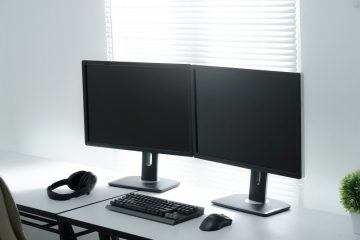Troubleshooting a Flickering Monitor

There are a surprising range of very distinct issues related to monitors and their causes can be grounded in both software and hardware. Monitor flicker is one such problem that crops up surprisingly often.
This article will offer you a handful of ideas you can try that will take care of the most common causes of monitor flicker. Of course, bear in mind that if none of those solve your issue, it might be that a hardware component inside the monitor itself has gone bad and you might need to take your monitor to a qualified hardware support technician to examine and hopefully fix without a complete replacement.
-
Table of Contents
Check signal and power cables
First of all, check your signal and power cable. If your video card and monitor have several connection options, try a different cable. For example, if you are using DVI but your monitor and GPU both have support for DisplayPort connections, try a DisplayPort cable.
Check that the plugs are well secured in place as well and there is no loose play. Poor connection can cause flicker and make it seem there is a more serious issue, when all you need to do is plug the cables in more firmly.
Finally, try a different monitor power cable. Power cables that are going bad can cause irregular power delivery to your monitor and that in turn can cause the image to flicker.
-
Update your GPU drivers
Outdated GPU drivers paired with OS updates can sometimes cause issues with your displays, including monitor flicker. Visit the website of your respective manufacturer or use the built-in automatic update tools inside Nvidia's or AMD's software to download and install the most recent video driver package.
It is recommended to opt for a clean install as that will not install the new driver on top of the existing one, but will first completely remove the driver, reboot and install the new one on a clean system.
-
Check your chosen refresh rate in Windows
Sometimes certain fullscreen applications and games can hijack the Windows refresh rate settings and override them. To make sure your monitor is running at its correct refresh rate, right click your desktop, then choose Display Settings. In the new window, click on "Advanced display settings" in the central panel.
There will be a Refresh rate dropdown box near the bottom of the window. Use that to set your refresh rate to the maximum refresh rate supported by your monitor according to its specs and depending on the signal cable you used.
The majority of non-gaming monitors will run at 60 Hz, while higher-end hardware may run at frequencies ranging from 75 Hz to 240 Hz.








